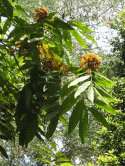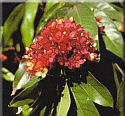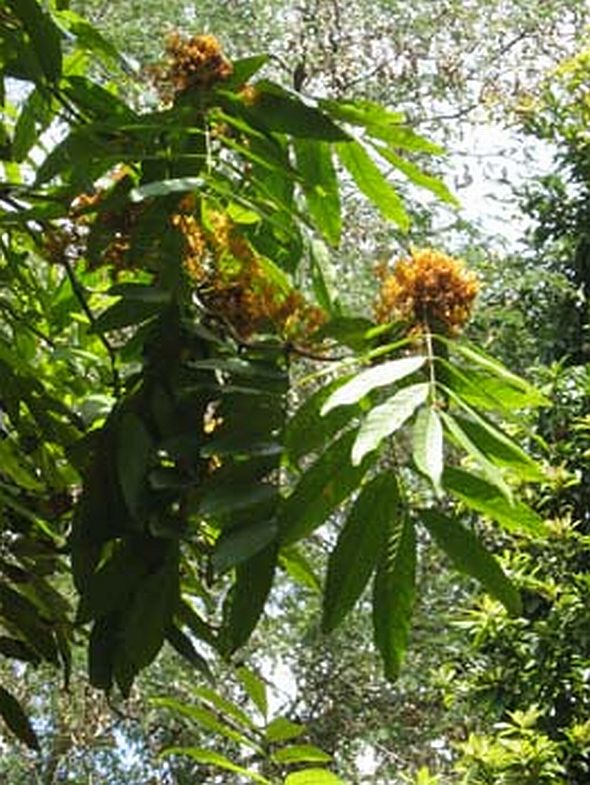



|

Plant Family: Belongs to the Caesalpiniaceae family, a mostly tropical and subtropical family, which includes the Orchid Tree (Bauhinia variegata), Flamboyant (Delonix regia) and Yellow Flamboyant (Peltophorum pterocarpum); (is sometimes classified in the Fabaceae family)
Description: Small, spreading, evergreen tree, 6-9 m tall (20-30 ft); leaves pinnate, 15-25 cm long (6-10 in) and 7-10 cm across (3-4 in), compound with 6 to 12 oblong leaflets; young leaves develop in long, drooping, grayish-white bunches; flowers born in large, dense, axillary clusters on branches and stems, chiefly in dry weather, are very fragrant, changing from yellow to orange to red; fruit a flat, leathery pod, 10-25 cm long (4-10 in), with 4 to 8 compressed oblong seeds
Natural Habitat: Thrives in shady locations, especially near water in semi-dry to wet areas
Origin and Distribution: Native to India where it occurs up to an elevation of 750 m (2500 ft) in the central and eastern Himalayas and in the Khasi, Garo and Lushai hills
Uses: Bark of Saraca tree used for its medicinal value, is reported to have stimulating effect on uterine and ovarian tissue; in India, is said to be useful in several ailments, including menstrual cramps, some cases of uterine bleeding, uterine fibroids, hemorrhoids, and internal bleeding.
Indigenous Legends: Tree is one of the sacred plants of Hindus, and is especially sacred to the Hindu God of Love, Kama Deva, for whom it is worshipped every year on December 27; it is mentioned in Hindu mythology as the Ashoka tree, beneath which the Indian philosopher and founder of Buddhism, Gautama Siddhartha (c.563-483 B.C.) was said to have been born; Ashoka means "without sorrow", a reference to the bark's reputation for relieving menstrual cramps and keeping women healthy and youthful; one report goes as far as saying, “Saraca indica is considered a magical herb.” !
References:
H.F. Macmillan. Tropical Planting and Gardening. Macmillan, London 1956
Ayurveda Health. Madhavnagar, Maharashtra, India: no date
US National Tropical Botanical Gardens, (ntbg.org). Kalaheo, Hawaii, 2004
Robert A. DeFilipps. Useful Plants of the Commonwealth of Dominica, West Indies. Smithsonian Institution, Washington, D.C. 1998
|



